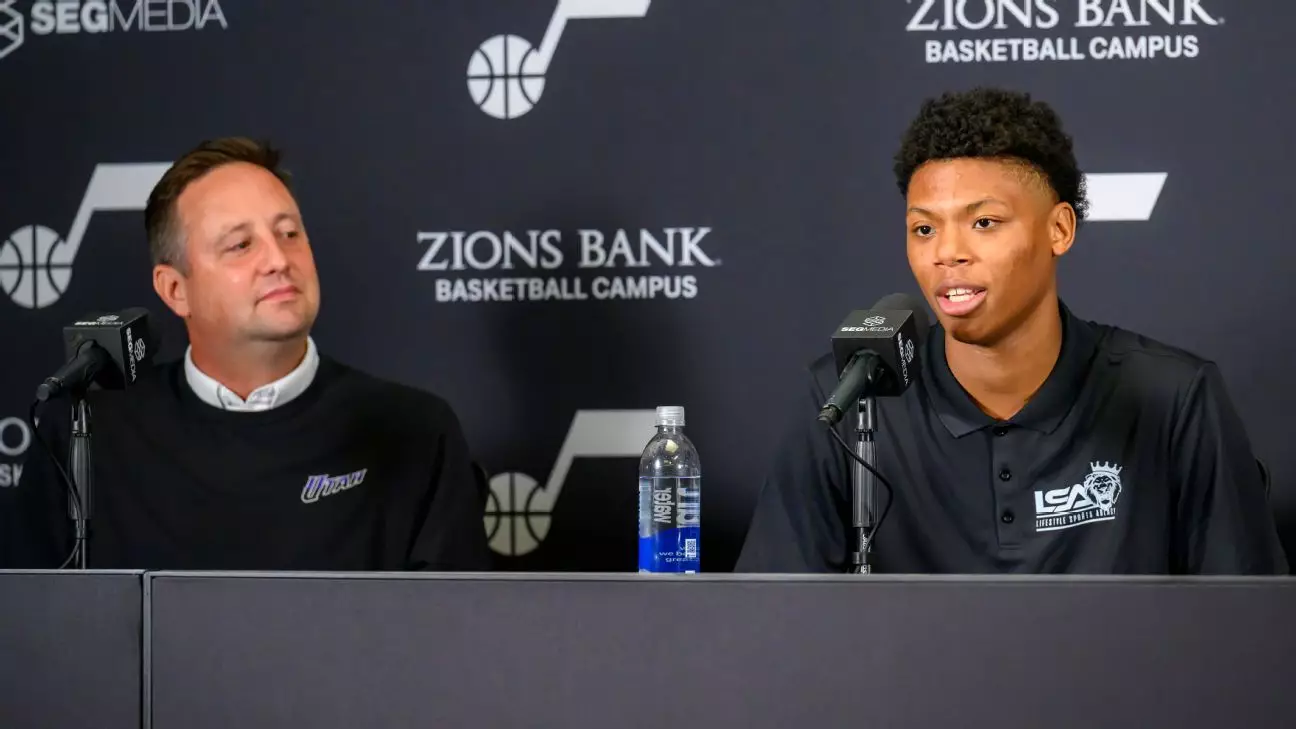Ace Bailey’s selection by the Utah Jazz with the fifth overall pick in the NBA Draft challenges conventional wisdom about how prospects should navigate the pre-draft process. His refusal to engage with multiple teams through workouts—most notably declining visits with the Philadelphia 76ers, Charlotte Hornets, and even the Jazz—stands out as a risky gamble in today’s hyper-scouted basketball market. Usually, young players bend over backward to curry favor with every team holding a pick, but Bailey ignored these norms, at times seeming disinterested or even defiant. Yet, paradoxically, the Jazz took a leap of faith, trusting their scouting and intuition over the apparent disinterest. This boldness on Utah’s part deserves scrutiny: it reveals a growing tension between the analytics-driven obsession with measurables and traditional scouting that values raw potential and character.
The Pitfalls of Pre-Draft Hype and the Misinterpretation of Player Motivations
Bailey was widely projected as a top-three pick, a testament to his college production and versatile offensive skill set. Standing 6-foot-8 with an ability to score inside, shoot from the perimeter, and move with agility, he fits the prototype of a modern forward who can stretch the floor. But he slid to fifth, in part because of concerns about his defensive impact, maturity, and ball-handling consistency. Additionally, his choice to skip workouts was perceived by some as a red flag, an unwillingness to fully commit or cooperate. This narrative oversimplifies Bailey’s position: rejecting certain workouts might not indicate arrogance but rather a strategic decision to avoid overexposure or misaligned fit discussions. Yet the public and media often conflate such decisions with lack of professionalism—a harsh judgment that might unfairly influence a player’s draft stock.
Utah Jazz’s Calculated Risk: Betting on Potential Over Perfection
The Utah Jazz’s endorsement of Bailey illuminates a refreshing willingness among some front offices to prioritize multidimensional potential rather than cold, hard metrics or media narratives. Austin Ainge, the Jazz president of basketball operations, characterized the rookie class as a “dream scenario,” emphasizing not just scoring prowess but the capacity to impact both ends of the floor. This holistic approach to player evaluation—valuing character, versatility, and defensive competence alongside scoring—challenges the reductive trend of rating prospects mostly on statistical greatness or flashy workouts. The Jazz’s faith in Bailey is an act of hope and vision that, while risky, might pay enormous dividends if the young forward develops as expected.
The Double-Edged Sword of Modern Player Development and Media Scrutiny
Bailey’s case also reflects broader issues within the current NBA ecosystem. Talented players today face immense pressure to conform to rigid pre-draft templates, constantly demonstrating all-around skills while maintaining an immaculate public image. In reality, young athletes are still evolving, both physically and mentally, and the leap from college to pro basketball demands patience. Bailey’s candid acknowledgment of mistakes and belief in continual improvement is a refreshing counterpoint to the media-driven obsession with instant readiness and perfection. It suggests that teams and fans might need a more forgiving, developmental mindset—especially toward players who show glimpses of brilliance but still have rough edges to smooth out.
A Middle-Ground Approach for Future Talent Evaluation
From a center-wing liberal perspective, the story of Ace Bailey underscores the necessity for balance in talent evaluation: combining data and human intuition, embracing complexity rather than simplistic labels, and recognizing potential through the lens of growth rather than flawless accomplishment. The NBA’s draft process should not penalize individuality or strategic decisions that deviate from the norm, especially when those choices come from young adults still finding their footing. Utah Jazz’s bold move is a reminder that innovation requires courage—and that sometimes, unconventional decisions bring fresh energy and hope to franchises and players alike.
In this light, the draft is less a rigid test and more a dynamic negotiation between risk and reward, where character and vision are as crucial as statistics and measurables. Ace Bailey’s path may not be textbook-perfect, but it embodies the unpredictable, deeply human journey of athletic development—a journey deserving of patience, respect, and a bit of daring.

